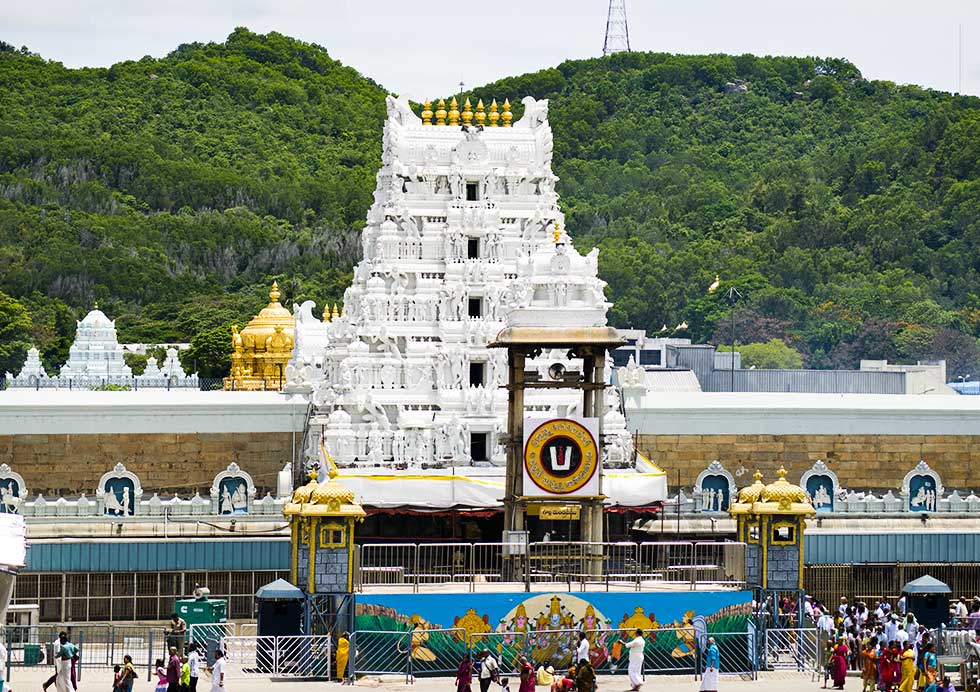
The Tirumala Venkateswara Temple, also known as the Tirupati Balaji Temple, shines as a radiant gem among the many sacred sites of India. Situated in the picturesque town of Tirumala in Andhra Pradesh’s Chittoor district, this temple signifies more than a mere place of worship; it embodies faith, culture, heritage, and spirituality. Dedicated to Lord Venkateswara, an incarnation of the Hindu deity Vishnu, the temple boasts a rich history, magnificent architecture, and a profound impact on the lives of countless devotees who undertake a pilgrimage to this hallowed sanctuary.
Historical Perspective:
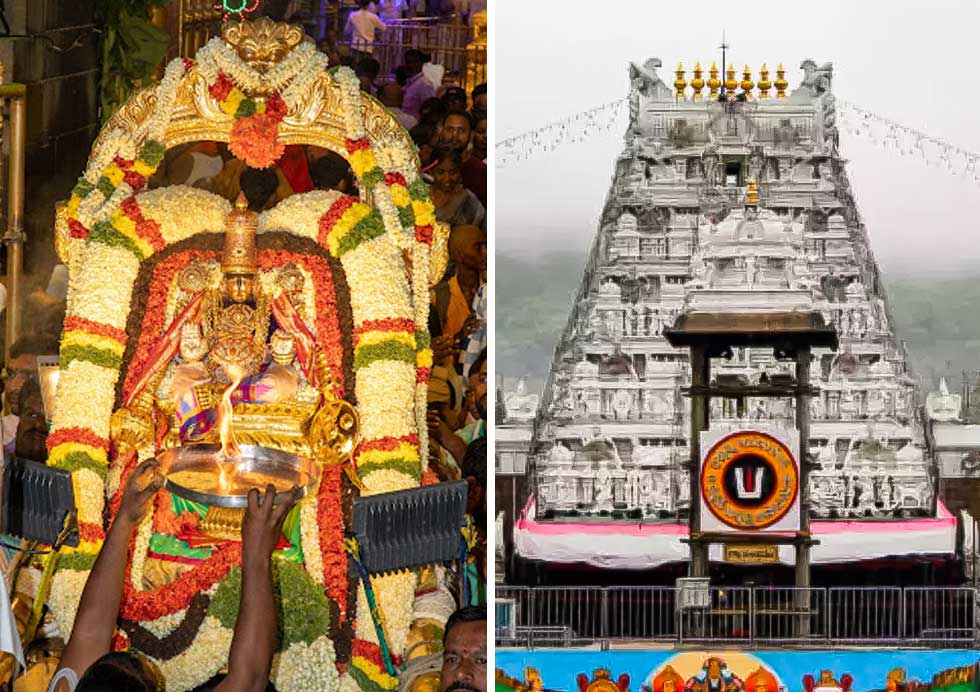
The history of the Tirumala Venkateswara Temple dates back over a millennium, making it a repository of tradition and spiritual heritage. Various dynasties and rulers have contributed to the temple’s development and preservation over the years.
The temple’s ancient roots can be traced to the Pallava dynasty, which had a strong influence on the region during the 9th century. Subsequently, the Chola dynasty played a crucial role in further developing and patronizing the temple. Later on, during the reign of the Vijayanagara Empire, the temple received significant contributions and endowments, solidifying its place in the religious landscape of South India.
One of the defining moments in the temple’s history was when the famous saint, Ramanuja, played a pivotal role in reviving the temple and its rituals in the 12th century. His devotion and teachings continue to inspire the temple’s practices and beliefs.
The temple’s ancient roots can be traced to the Pallava dynasty, which had a strong influence on the region during the 9th century. Subsequently, the Chola dynasty played a crucial role in further developing and patronizing the temple. Later on, during the reign of the Vijayanagara Empire, the temple received significant contributions and endowments, solidifying its place in the religious landscape of South India.
One of the defining moments in the temple’s history was when the famous saint, Ramanuja, played a pivotal role in reviving the temple and its rituals in the 12th century. His devotion and teachings continue to inspire the temple’s practices and beliefs.
Architectural Marvel:
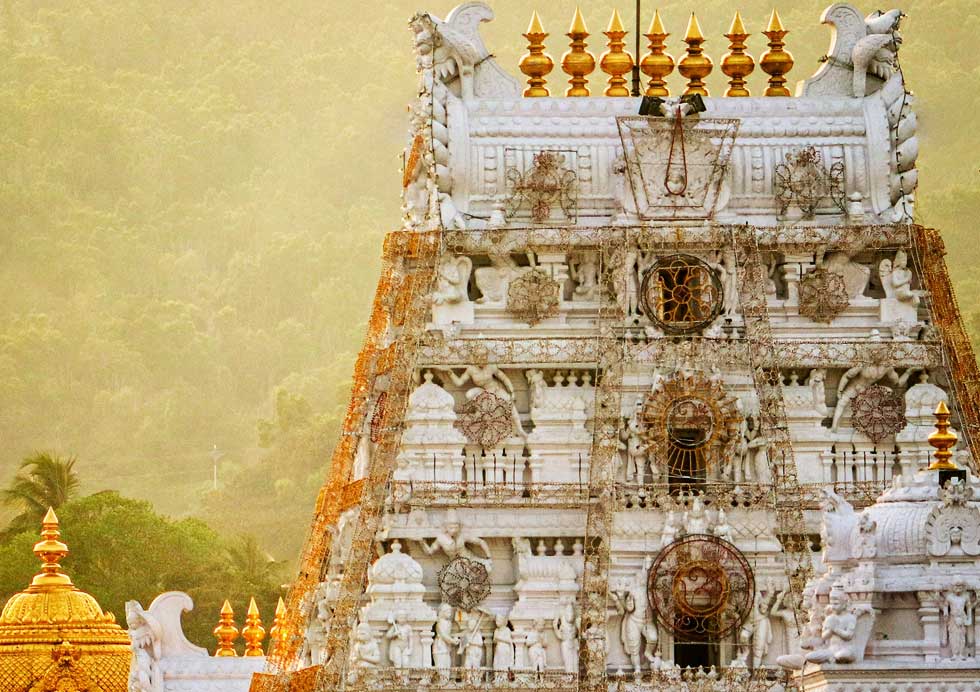
One of the most striking aspects of the Tirumala Venkateswara Temple is its magnificent Dravidian architecture. The temple complex is a testament to the craftsmanship of the artisans of yesteryears. The towering Gopuram (entrance tower) is a visual spectacle with its intricate carvings and sculptures that depict scenes from Hindu mythology.
The temple’s architecture adheres to the principles of Agama Shilpa, a traditional South Indian architectural style. It boasts a series of prakaras (enclosures), each revealing a deeper layer of spirituality as one progresses towards the sanctum sanctorum. The temple’s vast courtyards, pillars, and halls are adorned with exquisite sculptures and designs that capture the essence of Hindu spirituality.
The temple’s architecture adheres to the principles of Agama Shilpa, a traditional South Indian architectural style. It boasts a series of prakaras (enclosures), each revealing a deeper layer of spirituality as one progresses towards the sanctum sanctorum. The temple’s vast courtyards, pillars, and halls are adorned with exquisite sculptures and designs that capture the essence of Hindu spirituality.
Pilgrimage Destination:
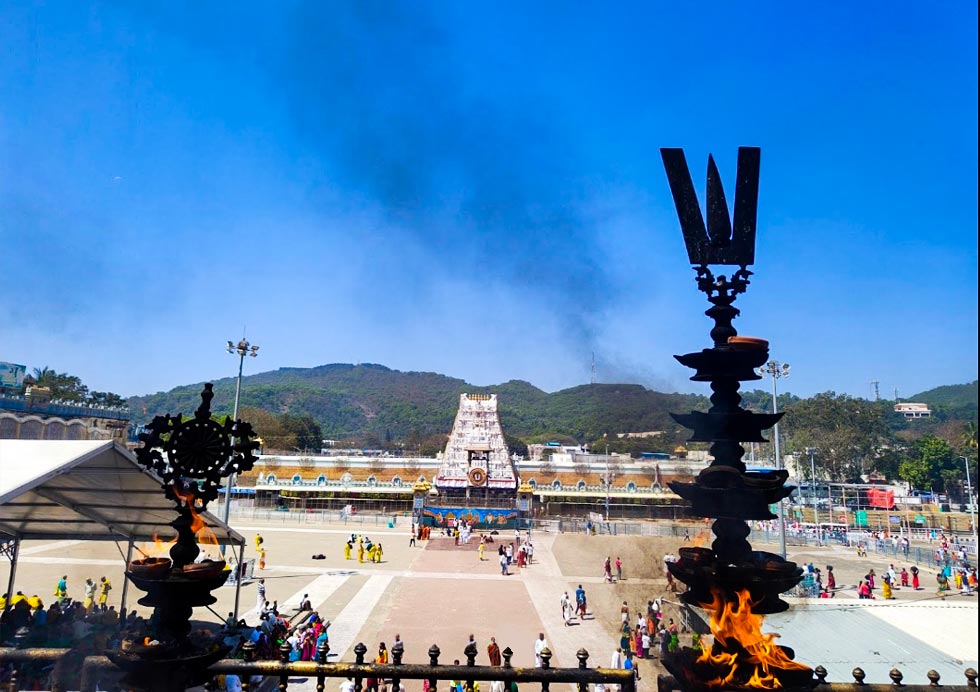
The Tirumala Venkateswara Temple is renowned as a major pilgrimage destination in India. Millions of devotees from all corners of the country and abroad flock to Tirupati to seek the blessings of Lord Venkateswara. A pilgrimage to this temple is believed to cleanse one’s soul and wash away sins.
Devotees undertake arduous journeys by foot, covering long distances to reach the temple as a demonstration of their unwavering faith. The temple’s elevated location in the Tirumala hills adds to the sense of spiritual elevation and the feeling of being closer to the divine.
Devotees undertake arduous journeys by foot, covering long distances to reach the temple as a demonstration of their unwavering faith. The temple’s elevated location in the Tirumala hills adds to the sense of spiritual elevation and the feeling of being closer to the divine.
The Deity: Lord Venkateswara:
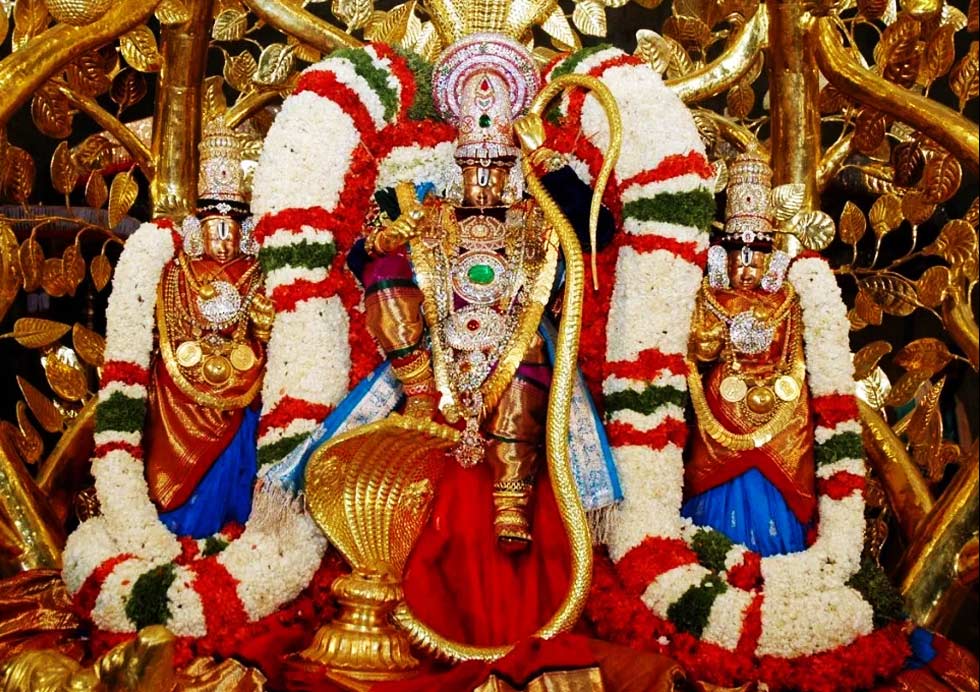
At the heart of the Tirumala Venkateswara Temple is the presiding deity, Lord Venkateswara. He is a form of Lord Vishnu, depicted standing with a conch shell and a discus in his upper arms and a lotus flower and a mace in his lower arms. The idol of Lord Venkateswara is considered self-manifested (Swayambhu), a divine phenomenon where the deity is believed to have appeared on its own without human craftsmanship.
Devotees believe that a glimpse (darshan) of Lord Venkateswara brings immense blessings and fulfills their wishes. The temple’s inner sanctum is where the main idol is enshrined, and it is the focal point of all the rituals and prayers conducted within the temple.
Devotees believe that a glimpse (darshan) of Lord Venkateswara brings immense blessings and fulfills their wishes. The temple’s inner sanctum is where the main idol is enshrined, and it is the focal point of all the rituals and prayers conducted within the temple.
Offerings and Donations:
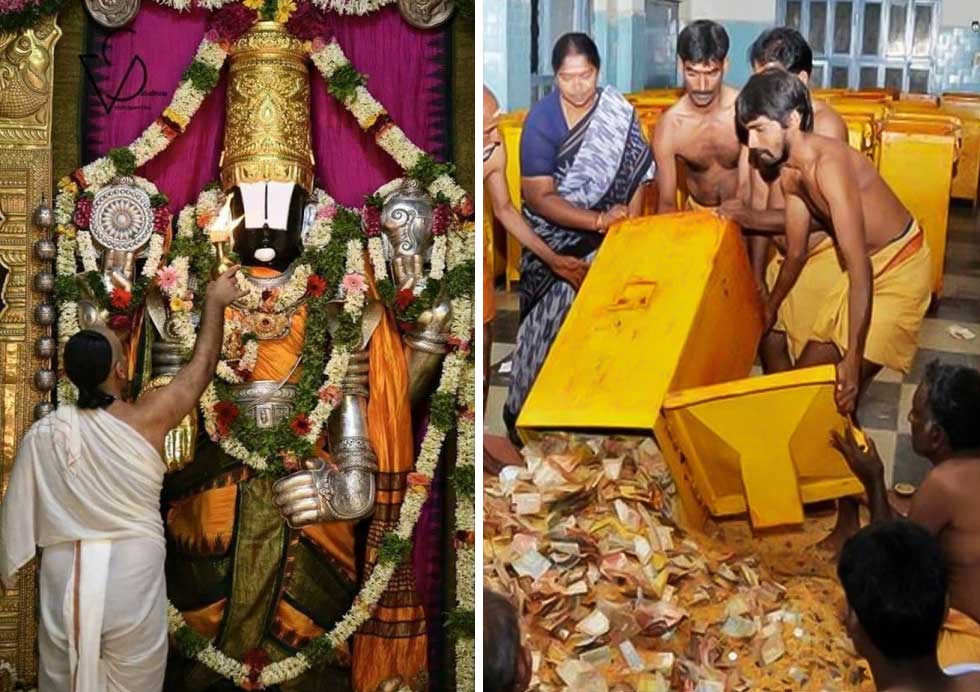
Devotees visiting the Tirumala Venkateswara Temple express their devotion through various offerings. The temple is famous for the offerings of money, gold, and other valuables made by pilgrims. These offerings are made with deep reverence and are believed to be offerings to the deity.
The temple is known for its hundi (donation box) collections, which are a testament to the unwavering faith of the devotees. The funds collected through these offerings are utilized for the maintenance and development of the temple complex and its various charitable activities.
The temple is known for its hundi (donation box) collections, which are a testament to the unwavering faith of the devotees. The funds collected through these offerings are utilized for the maintenance and development of the temple complex and its various charitable activities.
Festivals and Celebrations:
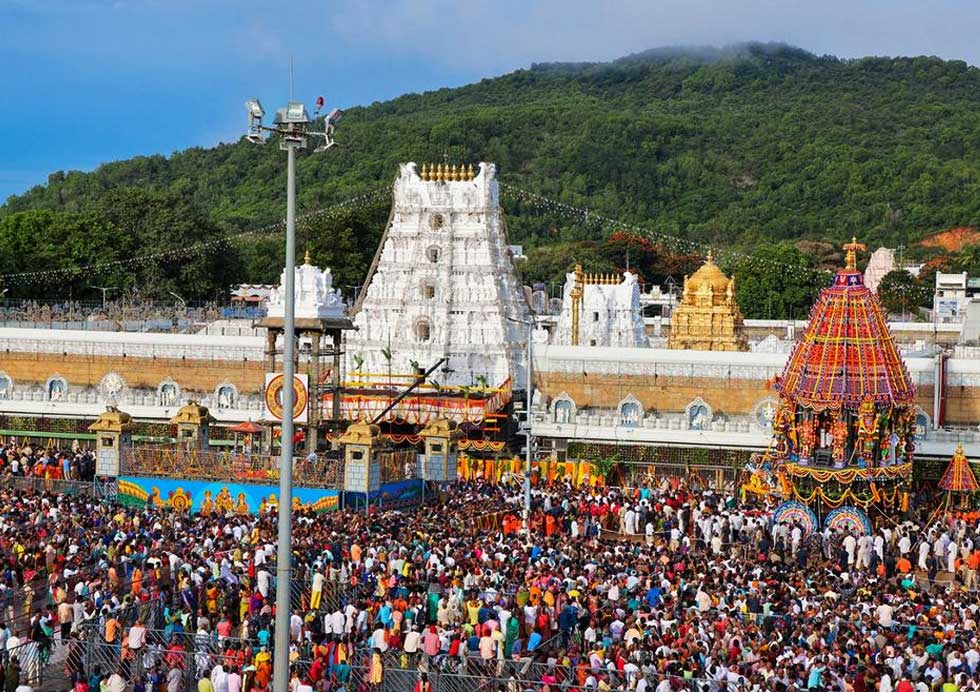
The Tirumala Venkateswara Temple is a hub of celebrations and festivals throughout the year. The most significant of these is the annual Brahmotsavam, a nine-day festival that is celebrated with great pomp and grandeur. The temple is adorned with colorful decorations, and processions featuring the deity are held during this festival. It attracts a massive gathering of devotees, and the festivities create an atmosphere of divine joy and celebration.
Other important festivals celebrated at the temple include Vaikunta Ekadasi, Rathasapthami, and the annual Teppotsavam, which involves the deity being taken on a boat ride in the temple tank.
Other important festivals celebrated at the temple include Vaikunta Ekadasi, Rathasapthami, and the annual Teppotsavam, which involves the deity being taken on a boat ride in the temple tank.
Spiritual Significance:
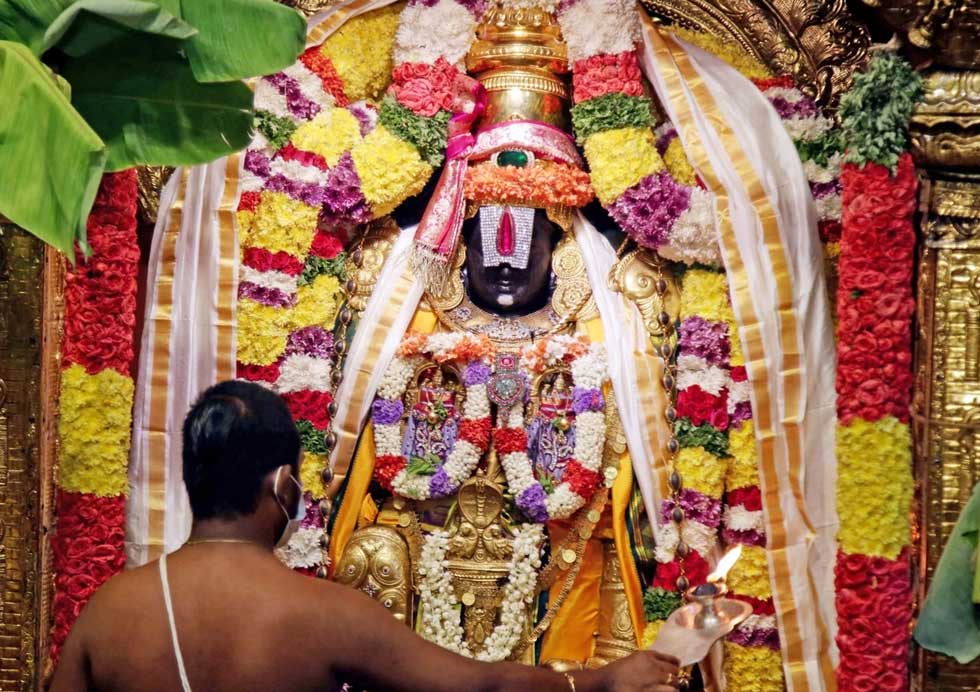
The Tirumala Venkateswara Temple holds immense spiritual significance for Hindus. It is not merely a place of worship but a sacred site where devotees find solace, inner peace, and a connection with the divine. It is believed that Lord Venkateswara fulfills the wishes of his devotees, and visiting the temple is a means to attain moksha, which signifies liberation from the cycle of birth and death.
The temple’s rich spiritual traditions are deeply rooted in Hinduism and have been passed down through generations. The rituals, pujas, and offerings are conducted with meticulous care, preserving the sanctity and essence of the temple.
The temple’s rich spiritual traditions are deeply rooted in Hinduism and have been passed down through generations. The rituals, pujas, and offerings are conducted with meticulous care, preserving the sanctity and essence of the temple.
